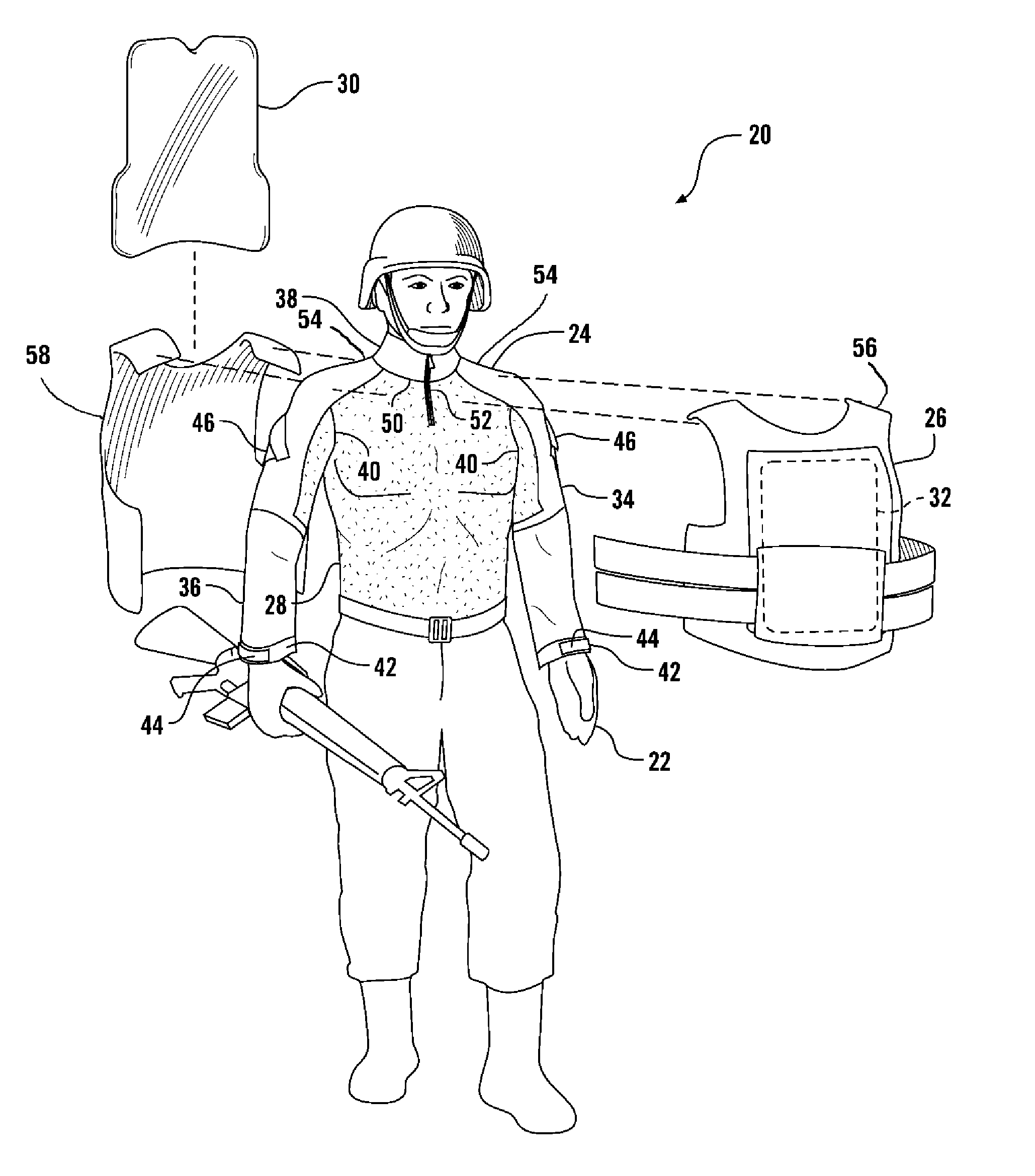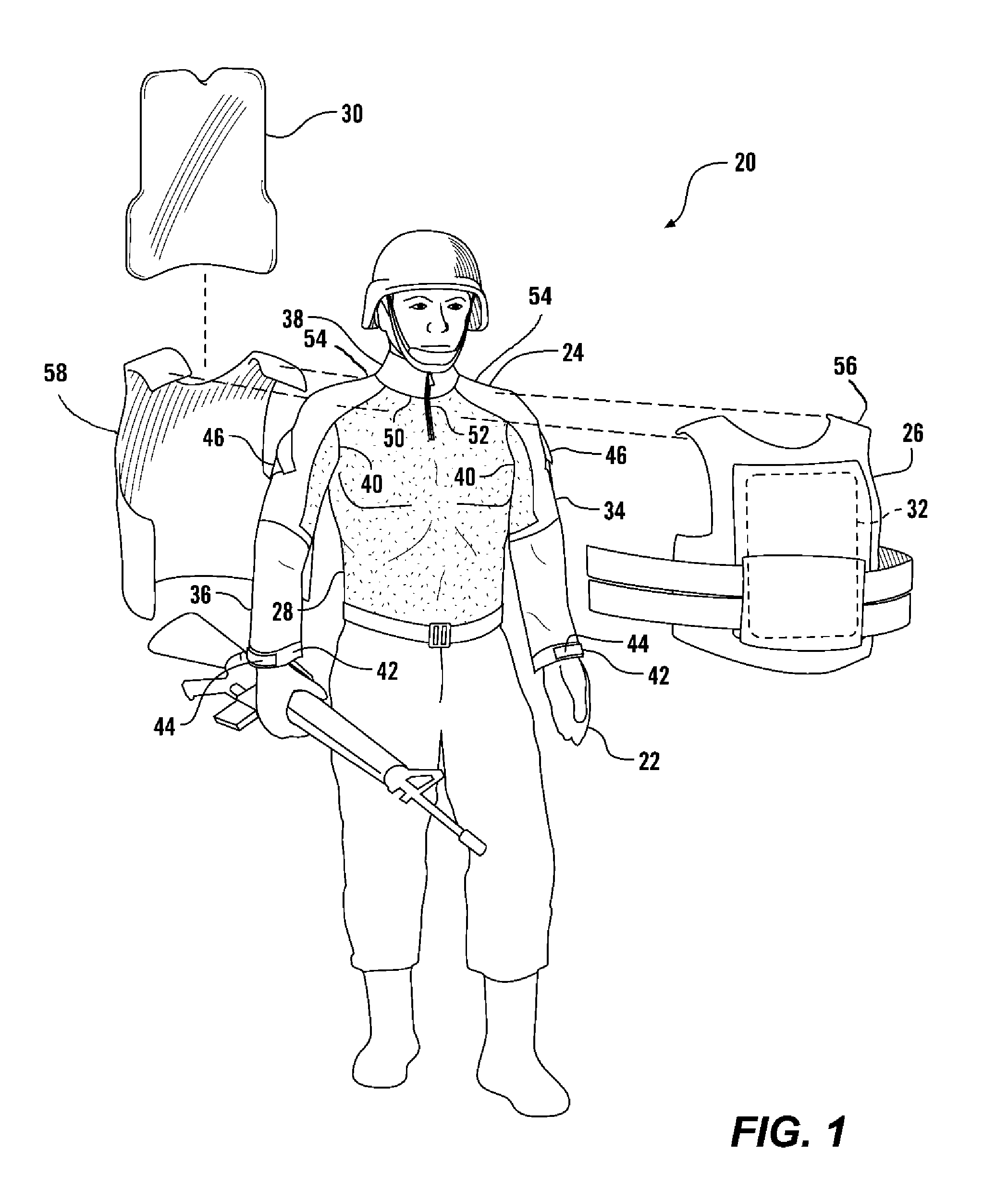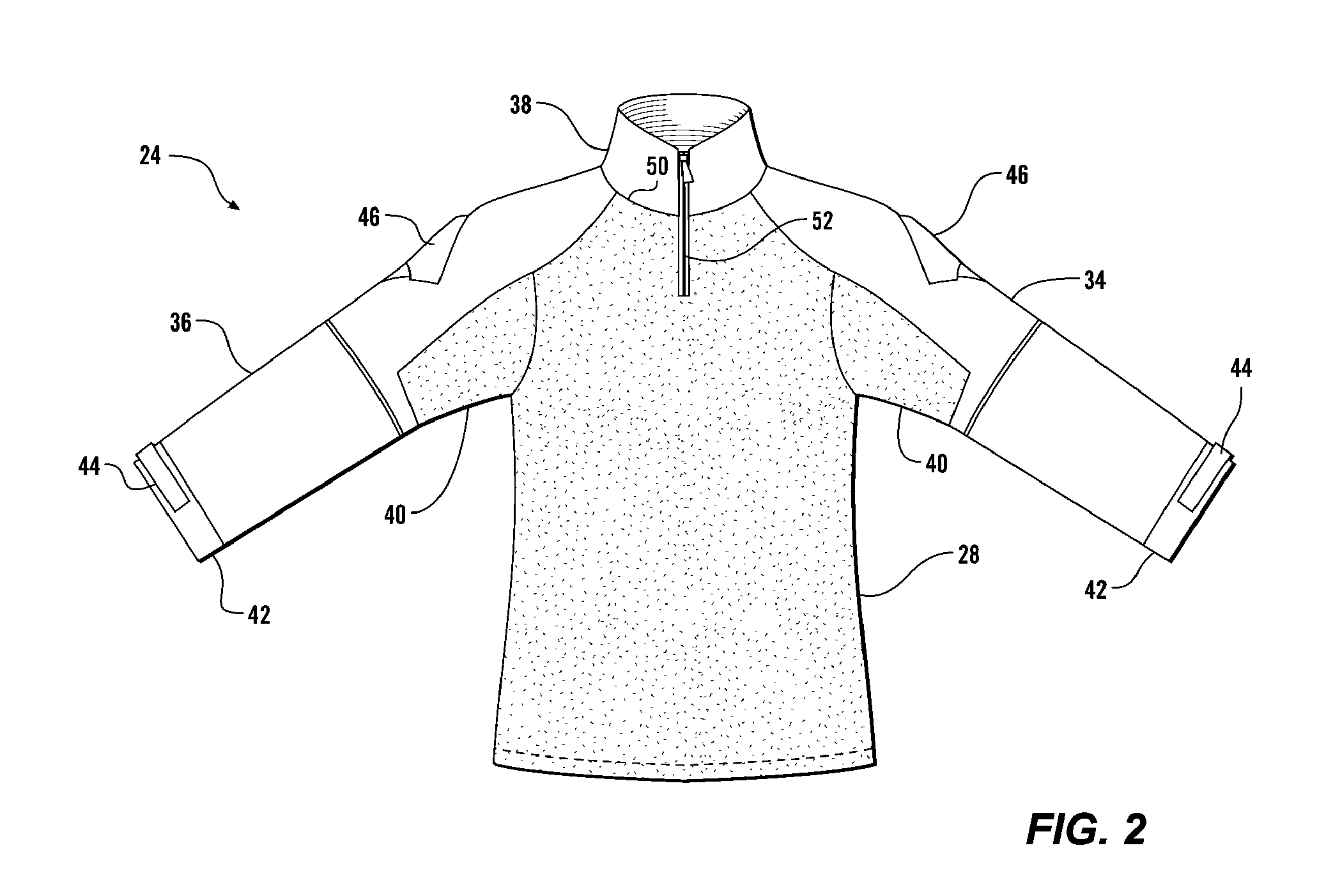Combat shirt and armor system
a technology of armor system and combat shirt, applied in chemical protection, nuclear engineering, nuclear elements, etc., can solve the problems of shirt shape loss and increased perspiration, and achieve the effect of reducing garment distortion
- Summary
- Abstract
- Description
- Claims
- Application Information
AI Technical Summary
Benefits of technology
Problems solved by technology
Method used
Image
Examples
Embodiment Construction
[0012]Referring more particularly to FIGS. 1-3, wherein like numbers refer to similar parts, a body armor system 20 of this invention is shown in relation to a wearer 22 in FIG. 1. The wearer 22 will typically be a soldier or police officer performing duties which present a risk of encountering gunfire. Such duties not infrequently call for high levels of exertion while carrying equipment. The armor system 20 is comprised of a shirt 24 worn with an armored element 26. The armored element 26 may be a ballistic vest such as is disclosed in our U.S. Pat. No. 6,892,392, the disclosure of which is incorporated by reference herein, or it may be any conventional ballistic vest, for example the U.S. Military Interceptor Multi-Threat Body Armor System, or its predecessor the Personnel Armor System for Ground Troops (PASGT) vest. The vest may have soft armor 30 or plate armor 32 inserts. The vest has a front section 56 with the armor 32, and a rear section 58 with the armor 30.
[0013]The shirt...
PUM
 Login to View More
Login to View More Abstract
Description
Claims
Application Information
 Login to View More
Login to View More - R&D
- Intellectual Property
- Life Sciences
- Materials
- Tech Scout
- Unparalleled Data Quality
- Higher Quality Content
- 60% Fewer Hallucinations
Browse by: Latest US Patents, China's latest patents, Technical Efficacy Thesaurus, Application Domain, Technology Topic, Popular Technical Reports.
© 2025 PatSnap. All rights reserved.Legal|Privacy policy|Modern Slavery Act Transparency Statement|Sitemap|About US| Contact US: help@patsnap.com



